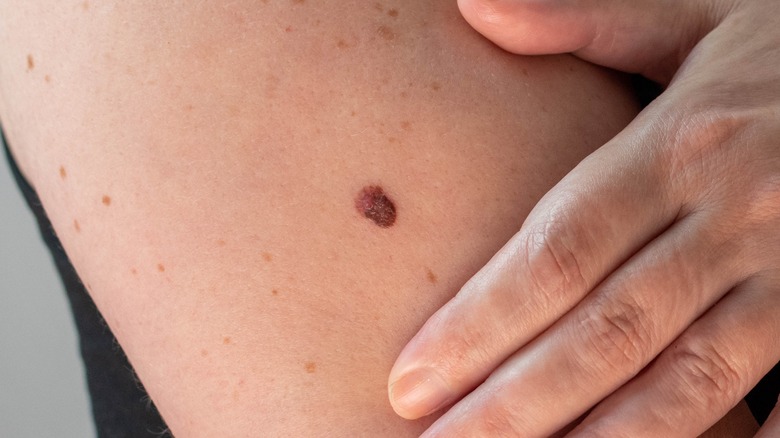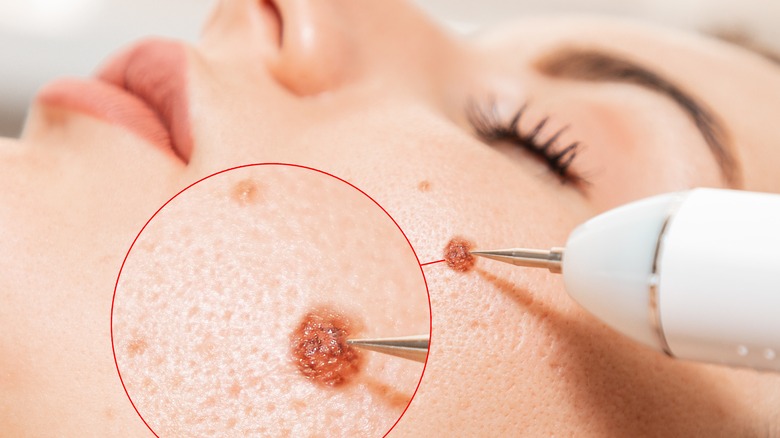How To Know If A Mole Is Cancerous
According to the National Health Service (NHS), moles are small, light, or dark spots on the skin. At times, they may have hairs growing from them. Moles may either be flat or shaped like a nodule, and they also vary in shape — moles may be circular, irregular, or oval. They are usually harmless, but if they change in size or color over time, they might signify something serious, warns the NHS. Changes in moles put you at risk of skin cancer, one of the most common types of cancer. About 9,500 Americans are diagnosed with it daily, according to statistics from the American Academy of Dermatology Association (AAD).
Per the Mayo Clinic, a person develops at least 10 to 40 moles in their lifetime. They may grow individually or in the form of clusters. The Mayo Clinic further states that moles may be brown, pink, red, black, or blue. They can appear on any part of the body, such as the face, back, abdomen, legs, arms, thighs, or even underarms. Additionally, the Mayo Clinic reports that because of internal hormonal changes, moles may evolve over the years and become darker or larger. Here is what you need to know about identifying a potentially cancerous mole.
Identifying signs of a cancerous mole
The Mayo Clinic states that the ABCDE rule is the best method to follow when looking for signs of melanoma or skin cancer. A stands for asymmetrical shape. This means if the mole appears irregular, or one half seems irregular in shape, it may be a symptom of cancer. The B stands for border. Skin cancer may cause changes in the mole's border — you might want to see if there are any scalloped or notched borders. The C means color changes. Any unusual color changes can indicate developed cancer within the mole, warns the Mayo Clinic. As the D stands for diameter, this refers to the mole's size. If the mole is more than one-fourth of an inch, you may want to get it checked right away. Lastly, E means evolving — some moles might continue to change in appearance or develop itchiness, scaliness, or begin bleeding non-stop.
The American Society of Clinical Oncology suggests booking a doctor's appointment if you notice any significant changes in moles so they can be examined and treated before getting worse. If they suspect cancer, you may be recommended a biopsy for confirmation.


